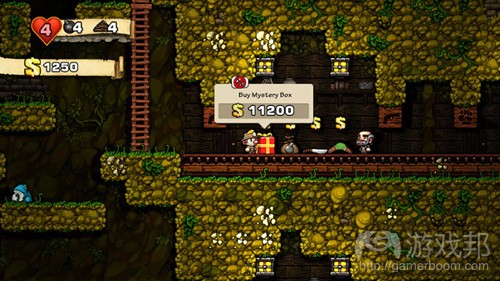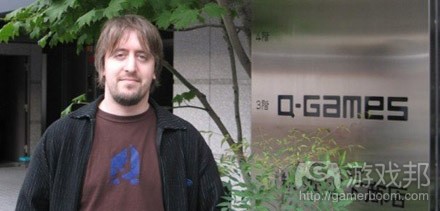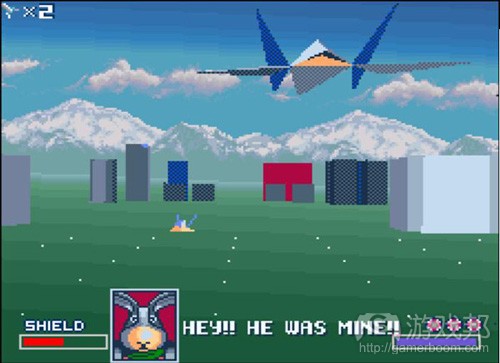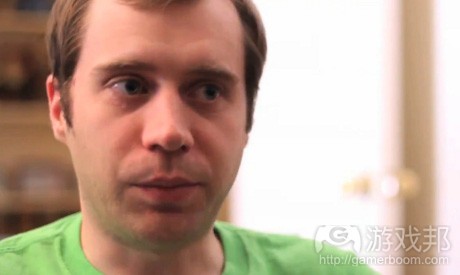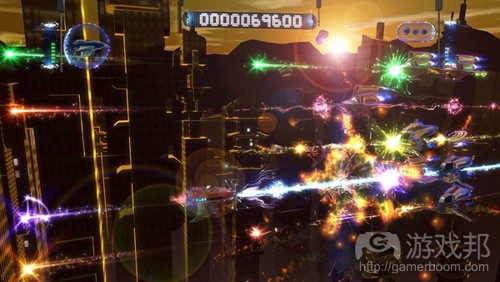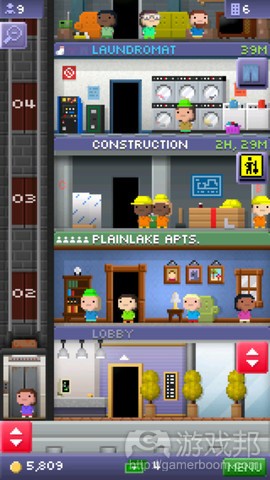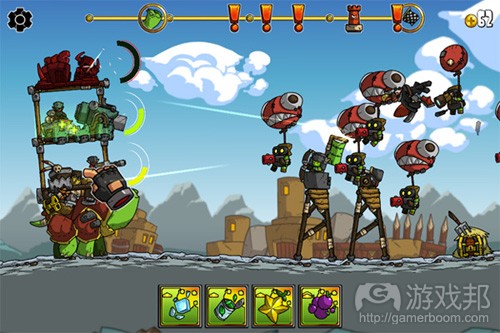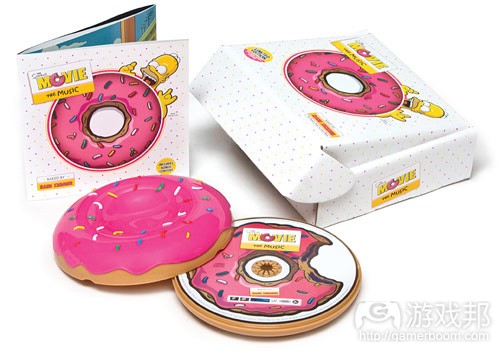 |
相關閱讀 |
總結GDC 2013獨立游戲開發者的9大建議
 |
>>> 技術話題—商業文明的嶄新時代 >>> | 簡體 傳統 |
作者:David Silverman
我出席GDC 2013大會時,多數時間耗在獨立游戲開發者峰會中,在那里聽到許多獨立開發者談論游戲項目和公司運營的成敗經驗。在此我總結了我認為最有用處,最可能讓你成為出色開發者的9大建議。
設計篇
“無論何時,都要盡可能重用現成的元素,而不是創造新內容。”——Andy Hull
Hull在短暫的演講中談論了他制作獨立游戲《Spelunky》并將其投放到Xbox 360的過程,及其木制玩具設計師的背景對這個項目的幫助。他指出當你設計一個木制玩具時,產品的每一個方面都存在極大增加成本的可能。即使是簡單地添加一種涂料,都會增加這個玩具產品的時間和資金成本。
盡管電子游戲與此不同(至少從技術層面上講是如此),但仍要注意合理使用你所擁有的游戲元素,并注意不要在游戲中添加過多元素。
在面向Xbox 360開發《Spelunky》時,設計師們開始關注每件武器在游戲中的用處,并判斷出手槍是遜于散彈槍的選擇。除此之外,手槍還有一整個無法與其他道具共享的彈藥系統,因此擁有并管理一支手槍可能會讓玩家很抓狂。
在將游戲移植到Xbox平臺時,他們決定移除手槍元素,并以回旋鏢取而代之。回旋鏢不但可發揮許多與手槍相同的功能,還有一個加分優勢,即在它飛回來時你若縱身躍起,它就會擊中你背后的敵人。移除手槍系統讓設計師獲得了為游戲添加新元素的自由,令他們得以引進新機制。
正如Sid Meier所言,“游戲是一系列有趣的選擇”。通過確保你的每個玩法機制都獨具一格,并且功能鮮有重疊,你就能夠為玩家提供有趣的選擇,給予他們重返游戲的理由。在評估玩法元素時,要先問問自己這每個元素的用途。如果你發現兩個元素在本質上很相近,那就得考慮砍削其中一者或者重新設計,使之更具獨特性。
“不要懼怕后退一步重新設計或重新開發。”——Dylan Cuthbert
Cuthbert在演講中提到的理念是,有時候即使你有一個很好的理念,它也很可能成為讓你無法獲得更棒理念的障礙。
在Cuthbert成立游戲工作室Q-Games之前,他曾為SNES開發過原版《Star Fox》。在開發這款游戲時,他們原計劃把所有關卡都設置成開放區域,以便玩家四處飛行并戰斗。雖然這一機制可行,并看似有趣,游戲本身卻并沒有他們所想象的那么好玩。游戲在此階段停留了數月之久,直到項目總監終于提出一個移除自由漫游這一概念的想法。
當時這個想法似乎很荒誕,因為這款游戲絕大多數內容是基于玩家可以自由飛行這一理念。除此之外,當時的自由漫游元素也受歡迎,如果移除這一元素似乎就會極大削弱游戲的吸引力。盡管存在這兩個顧慮,他們移除了自由漫游這一功能時卻發現,他們更容易開發游戲了,因為他們獲得了更多控制玩家體驗的權利,并且游戲也變得更加有趣,因為玩家不會再輕易迷失方向,更容易理解當前發生了什么狀況。
雖然最初可能看起來很荒唐,但重要的是記住無論你想制作哪類游戲,游戲中都不存在哪種必不可舍棄的功能。要從多個角度評估你的游戲,嘗試用多種不同的方法植入同一種類型的機制通常更可能催生出有趣的游戲。除此之外還要記住,某項功能看似游戲的一部分,但實際上未必如此。在開發過程中要向自己提一個問題:“這個功能阻礙了什么元素?”或者“這一機制是否隱藏了更好的機制?”簡單而言,就是不要懼怕從游戲中移除一個機制,因為這可能會讓你獲得新靈感,找到一個更好取代它的機制。
需要指出的是,他們在開發《Star Fox》過程經常添加機制并查看游戲植入新機制之后的變化,然后迅速移除不必要的機制。這讓他們得以真正看清游戲含有和未含有某機制的情況,也讓他們更了解某機制對游戲產生了什么影響。
Gilgenbach在演講中討論了他個人在開發獨立游戲《Retro/Grade》過程中與強迫癥和完美主義作斗爭的經歷。在開發游戲過程中,Gilgenbach沉迷于游戲外觀,并植入了一系列高級的圖像功能,但最終卻發現應該在游戲實際內容上多花時間,而不僅僅是讓游戲更為美觀。
在《Retro/Grade》開發早期階段,游戲圖像并不驚人,但也絕對不算難看。
在開發后期,此此的游戲圖像已經高度潤色,但其中的復雜性卻造成了一種視覺凌亂感。
《Retro/Grade》是一款基于節奏的游戲,已經開發數年之久,但它最終發布時卻只含有10首可播放的歌曲。問題就在于他并沒有在內容開發上用足心思,而是執拗于讓游戲引擎更為強大,添加了不必要的累贅功能和視覺效果。
Gilgenbach在演講中指出,玩家在游戲中的敵人Octo-bot眼睛實際上是由一系列復雜的動畫所組成,他投入了許多小時制作3D模型,以確保它的眼睛像活物一樣正確運行。對于一款擁有許多模型或角色特寫的游戲,這也許是值得花時間的理由,但這款游戲卻并不屬于這種情況。因為玩家幾乎看不到Octo-bot的眼睛,即使看到了,它最多也只是這個角色一個毫不起眼的元素。如果Gilgenbach肯在內容開發上多花時間,或者移除一些過于耗時的視覺效果,他可能就會推出一個更棒的成品。
在開發你的游戲時,不要讓你自己的游戲理念,以及你想修補的小細節屏蔽了真正重要的元素。要常考慮你所制作的東西將對玩家及其體驗造成什么影響,并常問自己這一功能究竟是會增加游戲銷量還是玩家在游戲中的樂趣。
開發篇
“重頭開始是個陷阱。”——Devin Reimer & Alexander Schwartz
Owlchemy Labs創始人在演講中討論了如何保持公司成功運營,啟動新項目時如何盡量減少浪費時間。他們提到的一個經驗就是,如果可以使用現成的工具或軟件完成任務,那就絕不要白費功夫從頭做起。
上圖是Owlchemy Labs最近游戲《Jack Lumber》的一張圖片。它完全由Unity開發而成,他們也因此得以專注于游戲設計、玩法,無需費力研究如何讓玩法準確運行。
作為獨立開發者,你可能想制作一款完全原創的游戲,或者接手發行商的外包工作。在這兩種情況下,項目最開始時如果為植入基本鍵盤控制方式或者讓游戲引擎正確繪制2D圖像而花費大量時間,那就是一種浪費,因為你本該把時間用于植入高級玩法功能或平衡所有不同玩法元素。你的時間最好用于設計和優化游戲,而非編寫一個之前已經使用了上百次的系統。
開啟一個新項目時,要常考慮是否可使用現成的引擎或工具,或者是否可重用你之前制作的其他游戲中的美術元素。雖然讓游戲呈現獨特性很重要,但也要注意不要讓項目未完工就面臨資金匱乏的窘境。如果有辦法使用現成工具或資源來加快開發進程,那就需要考慮下這些情況。
“選擇合適的美術風格。”——Ian Marsh
Marsh在演講中則討論了他過去幾年在自己的公司NimbleBit中所學到的知識,游戲所選擇的美術風格是他討論的內容之一。他認為美術風格不但決定了游戲的外觀和感覺,還會對游戲內容的開發時間產生深遠的影響。有些復雜的美術風格會花費更長的開發時間,或者需要更多人力去執行,所以選擇此類美術風格對一名獨立開發者來說并不實際。
以上是來自Nimblebit游戲《Tiny Tower》的圖片。它采用的是極簡藝術風格,這更便于執行,并且更易于開發者推出多個不同的變體。
如果你有制作《光暈4》或《暗黑破壞神3》這種游戲的時間和資源那是再好不過了,但要知道這些美術風格是由上百人的開發者、美術人員所組成的團隊歷時數年時間開發而成。若是寄希望于資金緊湊、四五人的小團隊做出具有如此細節和質量的游戲,那就真是太不現實了,并且很可能導致你的游戲永遠也無法完工。
選擇美術風格是開發游戲中重要的一步,這個決定會對完成每項美術資產所需的時間和精力帶來影響。如果你制作的游戲用2D或3D都可以輕松完成任務,采用全3D資產(游戲邦注:例如使用法向量貼圖、高光貼圖、反射貼圖等),就可能是一種浪費,并且可能不必要地擴大開發范圍,以及你完成游戲所需的團隊成員數量。
關鍵在于,謹慎選擇游戲的美術風格,因為這可能會影響到玩家對游戲的看法,并且還會影響到游戲的開發難度。不要自不量力地做一些團隊和項目所無法承受的事情,要找到一個平衡點,讓游戲在呈現可行的美術風格之時,傳達你想呈現的理念。
“注意你在每個項目中所投入的時間。”——多名開發者的經驗之談
這實際上是來自不同源頭的兩個建議,但它們都與時間管理有關,所以我認為最好把它們合并在一起。
Owlchemy Labs開發者表示,他們認為你在一個原型上所投入時間不應該超過一周,因為一天創造的原型就已經足夠一個月的潤色。這里的建議可能比較適用于他們團隊,因為他們的一般開發周期是6個月,所以最重要的是清楚你團隊的行事風格和開發周期。這有助于讓你更快決定項目開發時間,是否持續投入同一個項目,或是轉向新項目。
NimbleBit成員Ian Marsh提出了類似的觀點,他稱獨立開發者不應該在同一個項目上投入6個月以上的時間。作為一名獨立開發者,尤其是在你的事業生涯早期,最重要的事情之一就是盡量制作更多游戲,在短時間內收獲更多經驗,這樣你才會明白自己擅長什么,不擅長什么。如果你在同一個項目中投入過多時間,這會阻礙你繼續向前和嘗試新事物。除此之外,你在原創項目中投入額外時間也會給它的成功帶來更多壓力,令其以更失敗的方式落幕。
限制你在一個項目中投入的時間有助于防止項目變得比預期更為膨脹。過早結束項目固然不可取,但對于一個原計劃開發時間僅為數月的項目,如果拖牌了兩三年仍未完工,情況更糟糕。有時候你必須學會放手。
運營篇
“考慮三種玩家類型:有技能的玩家,有時間的玩家,有錢的玩家。”——Shane Neville
Neville在演講中談到了《Shellrazer》的開發過程。《Shellrazer》的設計一開始就考慮到了IAP元素,但Neville清楚如果自己太過重視游戲內部交易功能,這款游戲就不會太有趣,一開始也不太可能吸引到大量玩家。
為了解決這一問題,開發者在制作游戲過程中考慮了有技能的玩家,有時間的玩家,有錢的玩家這三種用戶類型的需求。
為了吸引有技能的玩家,他們制作了一個基于經典RPG的強大戰斗系統,這便于他們創造真正有趣且具有吸引力的游戲,這樣即使不想花錢的玩家也能享受其中樂趣。這個強大的戰斗系統也讓游戲更易于引來大量玩家。
為了招徠有大把時間,但技能不佳的玩家,他們為每個關卡提供了一些隨機性元素,例如敵人類型,以及敵人進攻規模。這意味著即使你在同個關卡中玩過多次,你所同到的敵人也不盡相同。這增加了游戲的重玩性和刷任務的趣味性,避免技能不佳的玩家第三第四回玩游戲時就開始膩煩。
最后他們還考慮了既沒技能,又沒時間,但卻愿意掏錢的玩家需求。對于這些玩家,開發者要確保玩家能夠以50美元及其以下金額的價錢購買到每件道具,以及最大化升級道具。
這意味著開發者深諳每件道具在游戲中的價值,因為他們會比較道具的成本以及游戲成本,這也意味著玩家不會因為在游戲中掏錢而破產。這些開發者確實是將購買內容的用戶視為游戲玩家,而不是像擠牛奶一樣的壓榨對象。
若要讓游戲獲得成功,就需要考慮每種玩家類型的不同需求,通過同時取悅這三個群體,他們最終推出了一個更為強大的產品。
“包裝與你出售的產品同樣重要。”——Andy Hull
Andy Hull提到的另一件事就是包裝的重要性。根據他做木制玩具的經驗,在某些情況下,木制的箱子會極大增加產品的可靠性,并為產品風格加分,因為這種包裝看似與產品融為一體。這種包裝會讓產品更為昂貴,但也讓產品更受兒童和家長歡迎,因為它在整體上提升了產品的品質。
(這是Simpson Movie的唱片包裝,它同游戲無關——但它卻是我見過的最佳包裝之一。)
在游戲領域,包裝就是屏幕截圖,盒套視覺設計,預告片以及所有可能將潛在玩家轉變為付費用戶和粉絲的元素。要確保你的產品“包裝”如何反映游戲的品質。
在準備發布或推廣游戲時,要花一些時間確保你所推出的一切內容都與游戲相關,并且像游戲本身一樣具有吸引力,確保你像開發游戲一樣用心在包裝上所投入時間與精力。制作高質量的截圖呈現游戲的閃光點,多下功夫制作真正出色的預告片,讓你的游戲更具吸引力,方有望讓人們更愿意購買游戲。
“盡你所能地推廣游戲。”—-多名開者的經驗之談
這個建議實際上也是由多名發言者的演講內容總結而成的。作為獨立開發者,你所遇到的最棘手的事情之一就是讓自己的作品獲得曝光度。鑒于這個原因,你得盡己所能讓人們談論和想到你的游戲。
一個簡單的事實就是,你和團隊中的其他成員可能就是游戲的最大粉絲團。雖然有些運氣好的游戲可以收獲大批粉絲,但許多獨立游戲運氣就沒有這么好了,即使有也敵不過一些小型的主流游戲。鑒于這種情況,你需要盡己所能傳播你的游戲,確保你所見到的每個潛在玩家都知道這款游戲。
我所得知的最佳建議之一就是,不要懼怕拋頭露面。參加GDC等行業活動,談論自己的游戲可能并非難事,因為你知道其他開發者可能會稍微留意一下,但參加PAX這類大眾活動或本地小型會議,可能就會令人膽怯,因為你不知道潛在玩家心里會怎么想。不要讓這種恐懼阻止你的前進步伐,記住,你所遇到的每個人都是潛在玩家,如果他們從未聽說過你的游戲,那這就是向他們介紹游戲的絕佳機會。除此之外,這些人會參加會議和活動就是因為他們本身喜歡游戲,如果你的游戲夠有趣,他們還是會看上幾眼的。
此外,不要將自己局限于參加游戲展會和活動,你還可以通過本地高校或節慶活動,甚至是在帶有公告板的公共場所宣傳你的游戲。如果你想讓自己的游戲獲得關注,你就應該抓住一切機會推廣和宣傳,不要只選擇“安全穩妥”的地方。
這個建議的要點很簡單:抓住一切機會推廣游戲,因為你得爭取一切潛在玩家。除此之外,口頭傳播也是積贊人氣的絕佳途徑,所有你能說服其玩游戲的人,都有可能讓其他人也來試玩游戲。(本文為游戲邦/gamerboom.com編譯,拒絕任何不保留版權的轉載,如需轉載請聯系:游戲邦)
9 Tips for Indie Game Developers I Learned at GDC 2013
David Silverman
When I attended GDC 2013 I spent most of my time at the Independent Game Developers Summit where I got to hear many successful indie developers talk about how their projects succeeded and how they’ve stayed in business through both success and failure. In this article I’ll go over the tips I found most useful, and the ones I believe will help you be the best developer you can be.
Design Tips
Whenever possible, reuse existing elements, rather than creating new ones.
Andy Hull
In Hull’s mini-talk, he discussed the work he did on the indie game Spelunky when it was being brought to the Xbox 360, and how his experience as a wooden toy designer helped him. One of the things he discussed was the fact that when you are designing a wooden toy, which actually has to be mass-produced, every aspect of the product has the potential to drastically increase the price of production. Even something as simple as adding an extra paint color increases the time and money that go into the production of a toy.
While this is not the case for video games, at least not technically, it is still very important to make good use of the game elements you have, and be cautious about adding too many elements to your game.
While developing Spelunky for the Xbox 360 the designers started to look at the usefulness of each weapon in the game, and determined that the Pistol was essentially an inferior version of the Shotgun, another weapon within the game. On top of that, Pistols had an entire ammo system that was not shared with any other items, and thus having and managing a Pistol could be annoying for the player.
When moving the game to the Xbox they decided to remove the Pistol and replace it with a Boomerang. Not only did the Boomerang do many of the same things as the pistol, it also had the added bonus of being able to hit enemies behind you if you jumped when it returned to you, instead of catching it. By removing the Pistol it gave them the freedom to add a new item to the game, and allowed them to introduce a new mechanic.
As Sid Meier says, “A game is a series of interesting choices”. By making sure that your gameplay mechanics are each unique, and that there is very little overlap between their functions, you are keeping the choices interesting for the player, and giving them a reason to come back. When evaluating your gameplay elements ask yourself what the purpose of each one is. If you find two elements are very similar in nature, you may want to consider cutting one or re-designing it so that it is more unique.
Don’t be afraid to take a step back and re-design or re-develop.
Dylan Cuthbert
In his talk, Cuthbert discussed the idea that sometimes, even when you have a good idea, it may be blocking you from seeing a better idea.
Before Cuthbert founded the game studio Q-Games, he worked on the original version of Star Fox for the SNES. When he was working on Star Fox, they had originally planned to make all of the levels big open areas that the player could fly around and fight in as they pleased. While the mechanic worked, and seemed to be interesting, the game itself wasn’t as fun as they thought it should be. The game was in this state for a number of months until eventually the director came up with the idea of removing the free-roaming aspect of the game.
At the time this idea seemed absurd because so much of the game was based around the fact that you could fly anywhere in the game field. On top of that, free-roaming was very popular at the time so it also took away what seemed to be a huge draw to the game. Despite both of these things, when they removed the free-roaming features of the game, they found it actually became easier to develop because they had more control over the player’s experience and what they were doing at any one time, and it became more fun because the player couldn’t get lost, and had a greater understanding of what was going on.
While it may seem absurd at first, it’s important to remember that no matter what kind of game you want to make, there is no feature that has to be in your game. Evaluating your game from multiple perspectives and trying out many different ways to implement the same type of mechanic will often lead to much more interesting games. On top of that, just because a feature seems integral to the game, it doesn’t mean it is. A good question to ask yourself throughout the development of your game is “What is this feature occluding?” or “Is there a better mechanic being hidden by the shadow of this mechanic?” Simply put, don’t be afraid to remove a mechanic from your game, because that may end up giving you the inspiration for an even better mechanic to use in that one’s place.
I think it’s also interesting to note here that while they worked on Star Fox they would often add mechanics to see how the game changed with the new mechanics included, and then remove them just as quickly. This allowed them to truly see the contrast of the game with and without the mechanic, which gave them an even stronger understanding of how it affected the game.
Focus on the content.
Matt Gilgenbach
In his talk, Gilgenbach discussed how his personal struggles with OCD and perfectionism hurt the development of his indie game Retro/Grade. While developing the game Gilgenbach obsessed over the look of the game and getting a number of advanced graphical features implemented, but in the end his time would have been better spent expanding the actual content of the game and not just making everything especially pretty.
Retro/Grade early in development. The game’s graphics are not incredible but they also aren’t bad by any means.
Retro/Grade later on in development. By this point the graphics are very polished looking but the complexity of them makes things seem somewhat visually confusing. Retro/Grade was a rhythm-based game that was in development for multiple years, yet when it finally released it only had 10 playable songs. The problem he ran into was that he didn’t focus enough on content development, and focused instead on making the game engine more capable, and adding unneeded features and visuals. For example, look at the large “Octo-bot” the player is fighting in the video below:
In Gilgenbach’s talk he said that there are actually a number of complex animations being done by the Octo-bot’s eye, and that he spent many hours on the 3D model making sure that the eye would function correctly as if it were a real object. In a game where you had a lot of close-ups of this model or character, this would be very important and would be a good use of time, but in this game, and in this example, it’s not. You can barely see the eye – and, even if you could, it is a minimally important aspect of the character at best. If Gilgenbach had spent more time on content development, or removed some of the visual features that made the art assets so time-consuming to produce, he would have ended up with a better final product overall.
When working on your games, don’t let your own perceptions of the game, and the miniscule things you want fixed, prevent you from seeing what’s truly important. Always consider how the thing you’re working on will impact the player and their experience, and always ask yourself whether a feature will increase sales or the player’s enjoyment of the game itself.
Development Tips
Reinventing the wheel is a trap.
Devin Reimer and Alexander Schwartz
In this talk, the founders of Owlchemy Labs discussed how they keep their business successful and what they do to minimize wasted time when starting new projects. One thing they touched on was the fact that you should never spend substantial time trying to do something from scratch when you could just as easily use existing tools or software to get the job done much more quickly.
This is an image from Owlchemy Labs’ most recent game, Jack Lumber. It was made entirely with Unity, which allowed them to focus on design and gameplay and not on making the intricacies of touch gameplay work correctly. As an indie developer you are either going to be making a completely original game, or doing contract work for a publisher or outside source. In both of these scenarios, having to spend countless hours at the beginning of the project implementing basic keyboard controls or getting the game engine to draw 2D images correctly, would be a waste when you could be spending your time on more important things like implementing advanced gameplay features, or balancing all of the different gameplay elements. In the end, your time is better spent designing and polishing the game, not programming a system that you’ve made a hundred times before.
When starting a new project, always consider whether there is an existing engine or tool you could be using, or if you could recycle elements of the art style from other games you’ve previously made. It’s important that all of your games be unique, but it’s also important that every game you make gets finished before you run out of money, so if there are ways to speed up the development by using existing tools or resources, you may want to at least consider those ideas.
Choose the right art style.
Ian Marsh
In his talk, Marsh discussed many of the things he learned over the years his company NimbleBit has been in business. One of the things he discussed was the impact your choice of art style can have on your game. Not only does the art style dictate the look and feel of the game, it also has a profound effect on how long the content will take to create. Some art styles, by necessity of their complexity, will take substantially longer, or require many more people to be executed well, so choosing to go with one of these styles could be very damaging for an indie developer.
This is an image from Nimblebit’s game Tiny Tower. While their art style is simplistic, it was easy for them to execute and allowed them to have a lot of different variations and possibilities easily. While it would be great if you had the time or resources to commit to making your indie game look like Halo 4 or Diablo 3, those art styles were both developed over the course of many years by teams of hundreds of developers and artists. Expecting to be able to reproduce that level of detail and quality with a five-man team on a shoestring budget is simply unrealistic, and will likely prevent your game from ever getting completed.
Choosing an art style is an important step, and every aspect of that decision will have an impact on the time and energy it takes to develop each art asset. If you are making a game which could be done just as easily in 2D as it can in 3D, then committing to having full 3D assets with normal maps, specular maps, transparency maps, diffuse maps, and reflectivity maps, would be a waste and would needlessly expand the scope of development and the number of team members you would need to complete the game.
The takeaway here is this, choose your art style carefully because it will impact how players perceive your game, but it will also impact how hard your game is to make, and that is just as important in the end. Don’t harm yourself by committing to doing something that is beyond the scope of your team or project and instead find the middle ground of an achievable style which also conveys the meaning you intended.
Be careful how much time you commit to each project
Multiple Talks
These are actually two tips from different sources, but they are both related to time management so I thought it was best to keep them together like this.
The developers at Owlchemy Labs said that over their career they have determined you should never spend more than a week on a prototype, because one day of prototyping is roughly equivalent to one month of polishing. This tip is somewhat specific to their team and the fact that they generally work in six month cycles, but the idea is that it’s important to know how your team works and how long you usually take to accomplish a given task. This helps when determining how much time to give to a project, and when trying to figure out whether to continue on a given project, or simply move on to a new one.
Ian Marsh from NimbleBit said something similar when he said that an indie developer should never spend more than 6 months on a project. As an indie dev, especially early in your career, one of the most important things is to make as many games as you can so you can gain a lot of experience in a short time, and so you can figure out what you are good at and what you are bad at. If you put too much time into any one project it will prevent you from moving on and trying other things. On top of this, the extra time you put into the original project will just put more pressure on its success and will make its potential failure even worse.
By limiting the amount of time you commit to a project you are preventing that project from becoming bigger than you originally intended and preventing yourself from going overboard. It sucks to end a project early, but – and trust me on this because I’ve experienced it – it can be far worse to be entering the second or third year of development on a project you didn’t expect to last longer than a few months. Sometimes you just have to let go.
Business Tips
Consider all three player types: players with skill, players with time, and players with money.
Shane Neville
In Neville’s talk he spoke about the development of Shellrazer. Shellrazer was specifically designed to have in-app purchases, but Neville knew that if he geared too heavily towards those purchases the game likely wouldn’t be very fun and would never attract a large user-base to begin with.
To solve this problem, the developers considered three different player types when working on the game: players with skill, players with time, and players with money.
To attract players with skill they worked extensively to make a strong combat system which had its foundations in classic RPGs. This allowed them to create a truly fun and engaging game that people would want to play even if they didn’t want to spend money. The strong combat system also made it more likely for the game to draw in large amounts of players.
To attract players who had lots of time to play but who may not be very skilled, they gave each level an element of randomness in what enemies you encountered and in how the waves of enemies were constructed. This meant that even though the level would be physically identical no matter how many times you played it, the types of enemies you would be facing would never be exactly the same. This kept the game more interesting through replays and grinding sessions, and prevented less skilled players from becoming bored when they replayed levels for the third or fourth time.
Finally they considered players who had little skill, and little time to commit, but who were willing to put in money so they could see all of the content. For these players they made sure that it was possible for the player to purchase every item in the game, and upgrade every item to its maximum level, for $50 or less.
By doing this it meant that they had a strong understanding of how valuable each item needed to be in-game to make a purchase worth it since they could compare the cost of that item to the cost of the game as a whole, and it meant no player would ever go poor paying for services in their game and allowed them to “keep their souls”, as they put it. Really, they just treated the players who were purchasing content as players, and not as cash cows like larger companies might.
Each player type required different considerations when making sure the game was successful, but by working hard to keep all three happy, they ended up with a stronger product than they would have otherwise.
Packaging is just as important as the product you’re selling.
Andy Hull
Another thing Andy Hull discussed, while talking about his experience with wooden toys, was the importance of good packaging. In some cases, like a play-set based on an old-timey band, the package was an actual wooden crate which greatly added to the authenticity and feel of the product since even the packaging felt like it was part of the product. Doing this made the product more expensive, but it also made the product more appealing to children and parents because it increased the quality of the product as a whole.
This is actually the packaging for the soundtrack from the Simpson Movie, and so isn’t related to games – but it is some of the best packaging I’ve ever seen. In games, the packaging is the screenshots, the box art, the trailer, and everything else that goes into turning potential players into purchasers and fans. Making sure the “packaging” of your product reflects the quality of the game itself is incredibly important.
When preparing to release or promote your game, take the time to ensure that everything you release that’s related to your game has the same appeal as the game itself, and make sure that you put the same time and energy into the packaging as you do the rest of the game. By making sure to get high-quality screenshots that really show off the game’s better points, and by putting the time into making a truly incredible trailer, you are making your game seem more appealing and hopefully making people more likely to buy it.
Promote your game as much as you can.
Multiple Talks
This tip was actually echoed at many of the talks I went to and was mentioned in passing at even more. As an indie developer, one of the hardest things is often getting your work seen. With this in mind, you need to do everything you can to get people talking about and thinking about your game.
The simple fact is that you, and the rest of your team members, are probably the biggest fans of your game. While some games are lucky enough to have huge fanbases, a lot of indie games don’t, and the few that do still don’t have anything as big as even some small major releases. With this in mind, you need to do everything you can to spread the word about your game, and make sure that any potential players you meet know what it is.
One of the best tips I heard was that you should never be afraid of going to public events. It’s easy to go to events like GDC and talk about a game you’re making since you know other developers will probably be able to look past rough edges, but going to public events like PAX, or even small local conventions, can be scary since you are afraid of what potential players might think. Don’t let this fear stop you from going though. Remember, every person you meet is a potential player, and if they’ve never heard of the game then it’s a great opportunity to tell them about it. On top of that, these people are at these events because they like games, and if yours is fun they’ll look past the rough edges too.
Also, don’t limit yourself to just gaming events, there are lots of places you could try and get attention for your games such as local colleges or festivals, or even public places with bulletin boards. If you have a game and you want it to get attention, you should take every chance you have to do so, not just the ‘safe’ ones.
The point of this tip is simple: promote you game every chance you get, because any player you can find is worth having. On top of that, word of mouth is the best way to make something popular, and anyone you can convince to play your game, has the potential to get other people to play it too.(source:gamedev)
David Silverman 2013-07-10 16:40:42
評論集
暫無評論。
稱謂:
内容:
返回列表
